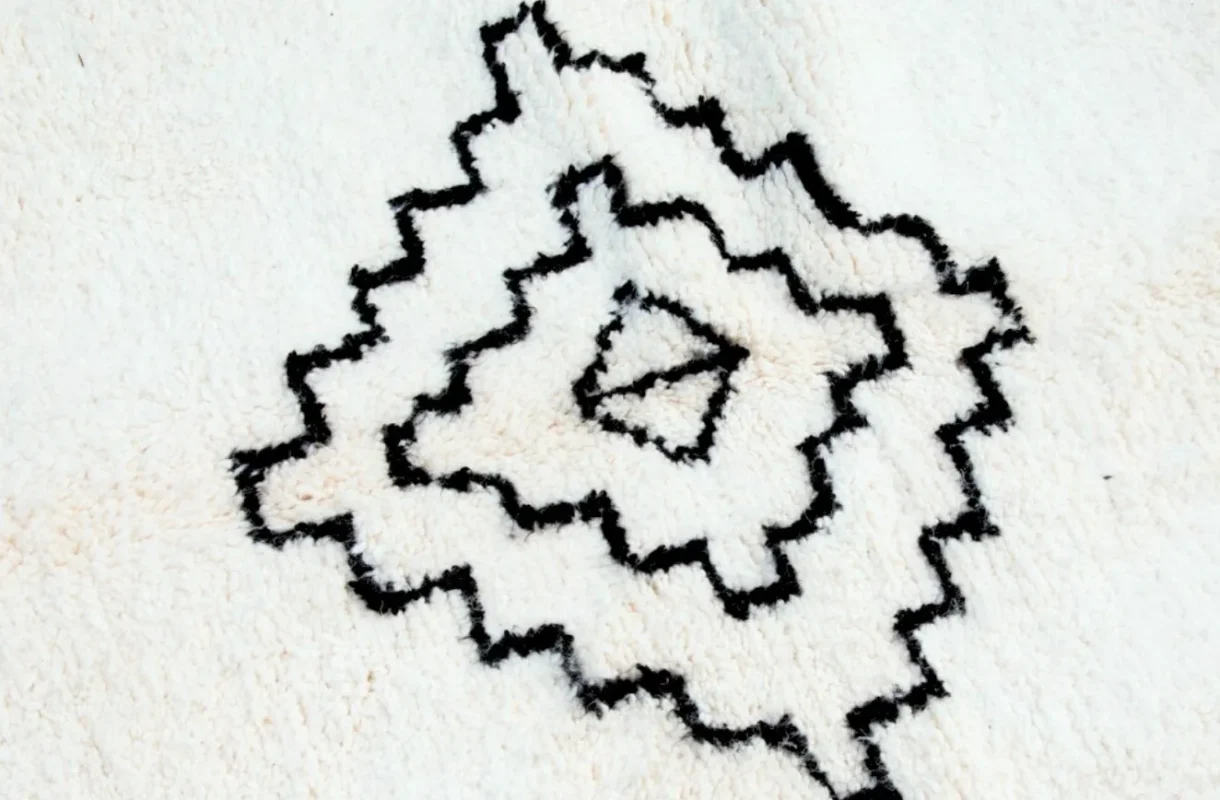No products in the cart.
Rug Knowledge & Heritage
What Is a Berber Rug? Origins, Meaning & How to Choose One
What Is a Berber Rug ?
A Berber rug refers to a handwoven textile traditionally made by the Berber (Amazigh) people of North Africa, especially Morocco. These rugs are recognized for their distinct patterns, symbolism, and use of natural wool. Unlike machine-made rugs, Berber rugs are handmade using centuries-old techniques, making each piece unique.
Origins: Where Do Berber Rugs Come From?

Berber rugs originated in the Atlas Mountains of Morocco. Each region and tribe developed its own style. Weavers often pass techniques from mother to daughter, making rug-making a deep-rooted cultural expression. The rugs were originally used to cover floors and walls or as blankets to combat mountain cold.
Materials Used in Berber Rugs

Authentic Amazigh rugs are made from 100% natural sheep wool, often hand-spun and dyed using natural sources like pomegranate, saffron, and indigo. Some rugs are left undyed for a neutral, organic look, especially in Beni Ourain styles. This quality wool gives Amazigh rugs their softness and durability.
Symbolism and Designs in Berber Rugs

Amazigh rugs aren’t just beautiful—they’re symbolic. Patterns represent aspects of daily life: fertility, protection, spirituality, nature, and womanhood. Geometric shapes like diamonds and lines carry tribal meaning and personal stories of the weaver.
Types of Berber Rugs
There are several regional types of Berber rugs, each with unique characteristics:
- Beni Ourain: Cream-colored background with minimalist black lines. Thick, plush, and soft.
- Azilal: Bold, colorful designs with abstract symbolism. Often made by female artisans.
- Kilim: Flatwoven, thinner rugs with geometric patterns. Great for layering.
- Taznakht: Heavier rugs with warm red, orange, and yellow tones and intricate detail.
How to Spot an Authentic Berber Rug
To identify a real Berber rug:
- Look for irregularities that show it was handmade
- Check the back for individual knots (not machine loops)
- Feel the texture—authentic wool is soft but sturdy
- Natural dyes may have slight color variation
👉 Learn more in our guide on how to spot priceless tribal Berber treasures
Where to Use a Berber Rug in Your Home
Berber rugs are versatile and fit beautifully in modern, bohemian, rustic, and minimalist spaces:
- Living Room: Add warmth and culture
- Bedroom: Create a soft, cozy floor layer
- Hallways: Use Kilim for a durable, stylish path
- Reading Nook: Add color and comfort with an Azilal rug
Pros and Cons of Berber Rugs
Pros:
- Durable and long-lasting
- Handmade and one-of-a-kind
- Natural materials, eco-friendly
- Adds cultural value to your space
Cons:
- Higher upfront cost
- May require professional cleaning
- Natural fibers can be sensitive to moisture
How Much Do Berber Rugs Cost?
Prices vary depending on the size, type, and quality. Handmade Beni Ourain rugs can range from $300 to over $2,000, while smaller Kilim or Azilal rugs may start around $150. These prices reflect time, materials, and artistry.
Care and Maintenance of Berber Rugs
To keep your Berber rug in great condition:
- Vacuum gently without beater bar
- Avoid direct sunlight
- Clean spills quickly with natural solutions
- Rotate the rug regularly
If you own a Beni Ourain rug, read our full guide on how to clean and maintain Beni Ourain rugs.
Final Thoughts: Are Berber Rugs Worth It?
So, what is a Berber rug really worth? More than a piece of décor, a Berber rug is a story woven in wool. From tribal tradition and symbolism to handmade craftsmanship and natural materials, it carries centuries of Moroccan culture into your home. Whether you choose a simple Beni Ourain or a vibrant Azilal, you’re investing in art, history, and lasting quality.
Berber rugs are not only beautiful but meaningful. They add character, comfort, and authenticity to modern interiors, while supporting artisan communities and preserving heritage crafts. When you bring one into your space, you’re not just choosing a rug—you’re honoring a tradition that has endured for generations.

